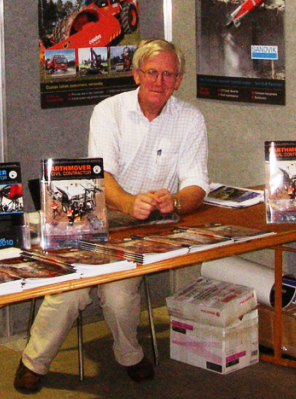Alright, I was older, but the Japanese walk, the Nakasendo trail connecting Tokyo with Kyoto they were proposing, was much shorter. The weather at the same time of the year should be similarly good too, as it was.
But my trip started badly soon after I put on my hiking boots in Benalla to catch the early morning XPT to Melbourne for an early afternoon flight to Japan.
The boots had been perfect in Spain, but were now far too tight. My big toes were telling me that in no uncertain terms. But it was too late to change, and I eventually hobbled into Tullamarine. About lunchtime the next day I hobbled into Ollee and his family's room in central Tokyo with a view of Mt Fuji and removed my boots for the first time.
Fortunately, Ollee had an old pair of runners to spare. I very gratefully eased my bloody feet into them. My other son Julian was there as well - he and I later took a train to Matsumoto, the starting point for our walk.
Ollee joined us after seeing his wife and boys off on a flight back to Melbourne. But we delayed for a day because of wet weather and spent some time inspecting the 400-year-old Matsumoto castle instead.
From there we walked about 80km over the next week or so to a point near Kyoto where we caught a high-speed train, Shinkansen, back to Tokyo. A train runs every nine minutes and costs $145.
The boys had booked us into traditional ryokan onsen accommodation each night. A ryokan features matting on the floor and futons and doonas as bedding. An onsen is a natural or constructed pool being fed hot, 40 to 43 degree spring water and there are many across the country.
Onsen users must be naked and clean. It can take some effort to appear to be clean enough. Ollee spent a great deal of time one evening using the handheld shower to meet the critical looks of a local onsen user who thought he was not doing enough to clean himself. Eventually he spent time scouring crevices between his toes and fingers before entering the onsen.
We had set meals at most of the onsens we stayed at. Generally, they included fish and sometimes beef and once raw horse meat. Small butane powered stoves allowed us to cook the meat the way we wanted but I ate my horse before I realised what it was. I didn't really get to grips with what we were eating but it was always totally fresh and well presented in small bowls. White rice was always a big part of a meal.
Much of the Nakasendo is through forest and in many places we were warned there were bears lurking. So, we carried small bells on our back packs to scare them off. We didn't see any, although some fellow travellers reckoned they could hear them. Another hazard at one point was over friendly monkeys according to a warning sign.
We saw no signs of farm livestock on our walk, not even poultry or dogs. Julian and I travelled to Kobe to eat their famous Wagyu beef in a restaurant set up presumably to service tourist demand. We also wanted to see Wagyus on a farm, but that didn't seem possible to arrange.
When asked by someone in U3A what Japan was like, I immediately said orderly. But it is more than that. It is meticulously clean as well.
We didn't spend much time with the locals apart from one evening when a mother and her son fed and watered us in a small restaurant. Turned out they had worked on a cruise boat on Sydney harbour.
The thing I quickly realised on this trip, was that we'd never done anything like it before and on how well we got on together. As well I realised that we'll probably not do it again.
David Palmer
June 2024
.


 RSS Feed
RSS Feed
